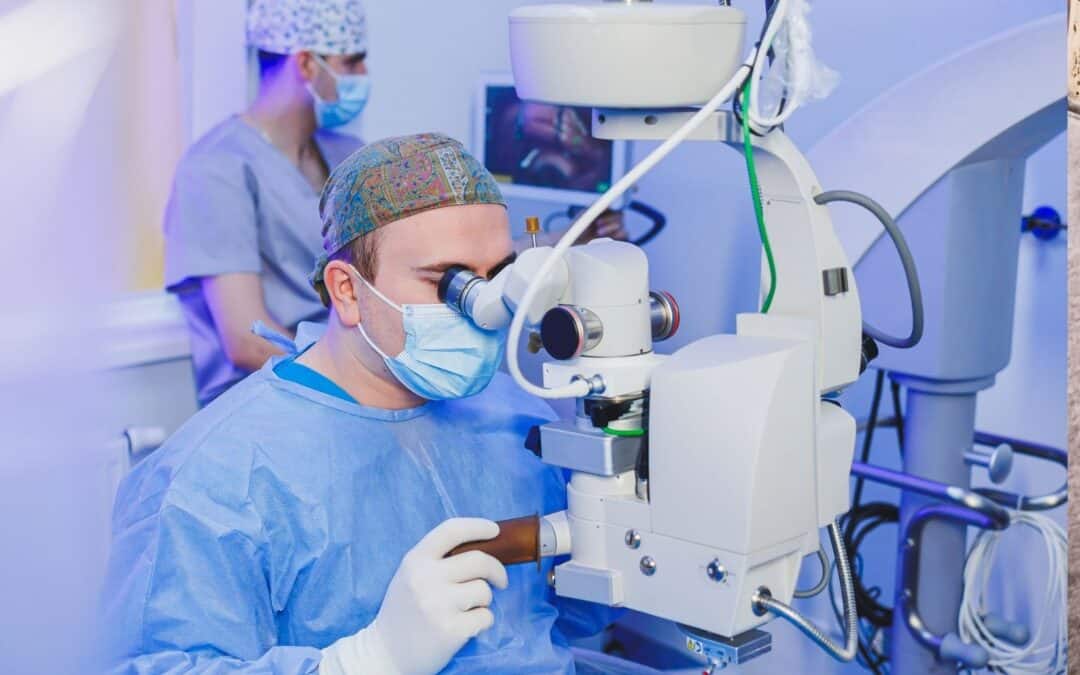LASIK (Laser-Assisted In Situ Keratomileusis) surgery is a popular corrective procedure for vision problems like nearsightedness, farsightedness and astigmatism. While generally safe, LASIK carries risks, including eye infections. In Chicago, medical malpractice cases related to LASIK complications have highlighted the importance of informed consent and proper care. Patients should understand potential risks before undergoing surgery. Effective communication between patients and healthcare providers is crucial. Transparency ensures patient trust. Healthcare providers must address concerns.
(Damages and Compensation for LASIK-Related Injuries: Understanding Your Rights)
Causes of LASIK-Related Eye Infections
Bacterial and Fungal Infections
Eye infections after LASIK can stem from bacterial or fungal contaminants. Improper sterilization, contaminated equipment or unsanitary conditions increase risks. Healthcare providers must adhere to strict hygiene protocols. Patients should prioritize post-operative care. Regular cleaning reduces contamination risk. Proper equipment maintenance prevents malfunction.
Patient Factors
Pre-existing conditions, such as dry eye or autoimmune disorders, can contribute to infection susceptibility. Non-compliance with post-operative instructions also elevates risk. Patients must disclose medical history and follow instructions carefully. Transparency ensures targeted care. Patient education enhances adherence.
Surgical Errors
Medical malpractice, including inadequate training or experience, can lead to complications. Chicago personal injury cases have addressed such incidents. Healthcare providers must stay updated on best practices. Continuous training enhances expertise. Peer review promotes accountability.
Symptoms of LASIK-Related Eye Infections
Common Signs
Vision disturbances, eye pain or discomfort, redness or swelling and discharge or pus indicate potential infections. Severe symptoms require immediate attention. Patients should monitor their condition closely. Prompt action prevents escalation. Awareness campaigns promote early detection.
Emergency Situations
Sudden vision loss, severe eye pain or increased sensitivity necessitate emergency care. Delaying treatment exacerbates risks. Rapid response ensures effective management. Emergency services provide critical support.
Treatment Options for LASIK-Related Eye Infections
Medical Intervention
Antibiotics or antifungal medications address bacterial or fungal infections. Topical treatments alleviate symptoms. Treatment duration varies depending on severity. Adherence to medication regimens ensures recovery. Regular follow-ups monitor progress. Medication side effects are typically mild. Dosage adjustments address concerns. Patient compliance ensures effective treatment. Healthcare providers monitor medication efficacy.
Surgical Intervention
In severe cases, corrective surgery may be necessary. Surgical intervention restores vision quality. Expertise and precision minimize risks. Advanced technology enhances outcomes. Surgical planning prioritizes patient safety. Pre-operative preparation ensures smooth recovery. Post-operative care prevents complications. Continuous monitoring ensures optimal results.
Preventative Measures
Proper post-operative care reduces infection risk. Following instructions and attending follow-up appointments enhances safety. Patient education empowers informed decision-making. Preventative measures reduce complications. Clear communication ensures understanding. Patient engagement promotes adherence. Pre-operative screening identifies potential risks. Personalized care plans address unique needs.
Medical Malpractice Cases
Holding Healthcare Providers Accountable
Victims of LASIK-related eye infections in Chicago may seek compensation through medical malpractice cases. Consulting experienced attorneys ensures effective representation. Understanding rights empowers victims. Time-sensitive action avoids missed opportunities. Healthcare providers must prioritize patient safety. Negligence can result in severe consequences. Victims deserve justice and compensation. Experienced attorneys navigate complex legislation.
Statute of Limitations
In Illinois, the statute of limitations for medical malpractice cases is two years. Prompt action ensures eligibility. Time-sensitive action avoids missed opportunities. Legal guidance ensures compliance. Filing within the statute ensures consideration. Delaying action jeopardizes eligibility. Legal consultation clarifies timelines. Compliance ensures seamless processing.
Proving Medical Malpractice
Establishing negligence requires demonstrating duty of care, breach of duty, causation and damages. Evidence supports claims. Expert testimony strengthens cases. Documentation ensures accuracy. Thorough investigation uncovers critical evidence. Medical records provide valuable insight. Witness testimony corroborates claims. Successful cases set legal precedents.
Conclusion
LASIK-related eye infections pose significant risks. Understanding causes, recognizing symptoms and seeking prompt treatment are crucial. Victims of medical malpractice should explore legal options. Awareness promotes safety.
If you’re looking for an experienced Chicago personal injury lawyer to help navigate your claim, we will fight assiduously for your right to the compensation you deserve. Call Bizzieri Law Offices at 773.881.9000. The case evaluation is free, and we never charge a fee unless we recover damages for you.

